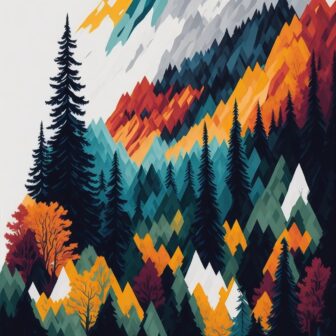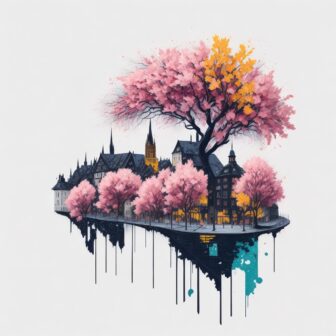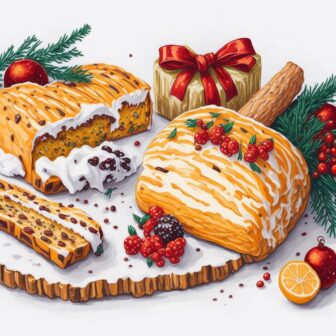Winter in Germany
When does winter in Germany start?
Winter for meteorologists begins on December 1st. Because that is the climatological or meteorological beginning of winter. The calendrical or astronomical beginning of winter is later, on December 21st or 22nd. This year the winter solstice falls on December 21st.
Beginning of winter December 1 for practical reasons
Especially for statistics, starting winter in the middle of the month would be impractical. The decision to set the beginning of winter at the beginning of a month dates back to the days before computers, as this makes it easier to compile monthly averages and temperature statistics for the winter. The data is easier to collect this way. Therefore, the meteorological winter runs from December 1st to February 28th, or in leap years to February 29th.
Winter Solstice: Astronomical or calendar beginning of winter
The calendar or astronomical winter begins in the northern hemisphere on the shortest day of the year, on December 21st or 22nd. This is the winter solstice. December 21, 2022 is the start of winter at 10:47 p.m. (CET). This is the time when the sun is vertically above the Tropic of Cancer and the days are at their shortest here.
However, the end of the day, i.e. the sunset, has been pushed back since December 11th. But it got light later. Overall, the days were even longer. In the near future, the sunrise time will stagnate, while in the afternoon it is only imperceptibly, but at least a bit longer light.
What to wear in winter in Germany
In Germany, winter is cold and wet. Therefore you should have at least one thick anorak, preferably with down. Or a thick weather jacket that is windproof and rainproof.
Of course you need boots, preferably lined and waterproof. Thick wool socks keep your feet warmer than thin cotton socks! Add a handful of wool sweaters or thick fleece sweaters. A scarf, a hat (over the ears) and a pair of thick gloves. Jeans or corduroy trousers are usually sufficient.
This should be your basic equipment if you visit Germany for a longer period of time in winter. You can then buy the rest here.
Winter festivals in Germany
In Germany winter festivals are celebrated with great enthusiasm and excitement. As you may know, Germans love to celebrate and there are a few special events during the winter months that you should definitely experience.
Let’s start with Christmas, one of the most beloved holidays in Germany. The Christmas season officially begins on the first Advent Sunday, which is four Sundays before Christmas Day. This is when Germans start to prepare for the holiday season by decorating their homes with Advent wreaths, candles, and other festive decorations.
On Christmas Eve, families come together to celebrate and exchange gifts. It’s a magical night filled with warmth, love, and delicious food. Germans typically enjoy roasted goose, carp, or pork with gravy, red cabbage, and dumplings. And of course, no German Christmas celebration would be complete without traditional holiday treats like Lebkuchen (gingerbread), Spekulatius (spiced cookies), and Stollen (a type of fruit bread).
But before Christmas, there’s another special day that is eagerly anticipated by German children – the feast of Saint Nicholas, or Nikolaustag. On the evening of December 5th, children put out their boots or shoes in anticipation of a visit from Saint Nicholas. If they’ve been good throughout the year, they wake up the next morning to find their footwear filled with small gifts and sweets.
Finally, we come to Silvester, or New Year’s Eve, which is celebrated with fireworks, parties, and lots of food and drink. Germans love to gather with family and friends to ring in the new year with style. It’s a time for reflection, gratitude, and optimism for the year ahead.
Overall, winter in Germany is a wonderful time to visit and experience the joy and warmth of traditional holiday celebrations. So, feste muss man feiern können – let’s celebrate!
Winter destinations in Germany
Spring, summer and autumn have their charms - but for many, winter is the most romantic season in Germany. When it’s bitterly cold outside, the Germans move closer together on the long winter evenings. Be it in private and with loved ones by the blazing open fire, drinking tea, in the candlelight or while telling stories.
In larger groups, thermal baths with a sauna, visits to the theater and cultural activities in the warmth are popular contrasts to the “outdoor program”. But when it snows, there’s no stopping young and old! Time for snowball fights, spherical snowmen with pot hats and long carrot noses in the front gardens, tobogganing, skiing or hiking through the white winter forests.
The pre-Christmas period is particularly romantic. That’s when Advent calendars are made or looted, the smell of cinnamon stars in the bakehouses and the Christmas markets entice you with bratwurst and mulled wine.
Oberhof/Thuringia, Garmisch-Partenkirchen/Bavaria
For sports enthusiasts, dreams come true in winter. For example in Oberhof in the Thuringian Forest. The winter sports area in the middle of Germany is one of the best known in the country. It is considered to be particularly snow-sure.
Even the top athletes in the disciplines of biathlon, tobogganing, bobsleigh, cross-country skiing and Nordic combined train here. Oberhof offers two alpine downhill slopes, the only cross-country skiing hall outside of Scandinavia and an extensive network of cross-country ski runs.
There is also a two-kilometer natural toboggan run that is particularly popular with families. The high-alpine Zugspitze ski area near Garmisch-Partenkirchen in southern Germany is also an Eldorado for skiers and snowboarders.
Twenty kilometers of pistes with guaranteed snow, an extra-long season from November to the beginning of May and a spectacular panoramic view of 400 Alpine peaks lure you here. The highest ski area in Germany also offers three toboggan runs and invites you to an adventurous overnight stay in an igloo village high above the clouds, at 2,600 meters above sea level.
Baden-Baden/Baden-Wuerttemberg
What could be nicer than taking a pleasantly warm bath in the winter cold. Destination Germany has more than 350 spas and health resorts up its sleeve. Sophisticated relaxation can be found in the spa town of Baden-Baden.
Here, 800,000 liters of hot, mineral-rich water bubble up from a depth of around 2,000 meters every day and invite you to enjoy the thermal baths. Architecturally spectacular is the Friedrichsbad, a magnificent building from 1877, which still stylishly combines Roman bathing culture with hot-air baths.
A newer version of the Friedrichsbad is the Caracalla Therme in Baden-Baden. On 4,000 square meters, soothing relaxation in the hot thermal water lures you in a modern ambience. If you want to do even more for your respiratory system, the Salina Baden-Baden sea salt grotto is the right place for you. Salt from the Himalayas and the Dead Sea provides a healing microclimate here.
Nuremberg/Bavaria, Dresden/Saxony
Mmh, delicious… Christmas is the time for culinary delights. In addition to almonds, nuts and chocolate, sweet pastries are often served.
The Nuremberg gingerbread is typical and world-famous. A sweet dough made from flour, honey, nuts and spices such as cinnamon, coriander and cardamom is placed on a wafer and then baked in the oven. This spicy delicacy goes back to the Franconian monastery brothers who were already making gingerbread in the 14th century.
The Dresdner Christstollen is also popular all over the world. According to a fixed recipe, flour, raisins, butter, almonds and all sorts of other ingredients and spices are mixed into a heavy yeast dough and baked in the oven.
RELATED:
Best Christmas Markets in Germany
Christmas Foods in Germany: What to eat and drink in Germany
German Christmas Traditions: What to Do in Germany for Christmas
Best Hotels in Dresden
Best Places to Visit in Dresden
The Christmas stollen looks back on a long tradition and was considered a fasting pastry in the Middle Ages. If you don’t want to bake your own, you can also find typical German delicacies at the Christmas markets, which take place all over the country in December. Hardly anything is more romantic than strolling through the festively lit markets in heavy snowfall, drinking hot mulled wine and enjoying delicacies at the stalls.
Harz/Lower Saxony, Saxony-Anhalt and Thuringia
Walks through snow-covered forests are excursions into a fairytale world. One of the most popular low mountain ranges for a winter hike is the Harz Mountains.
When thick snow caps rest on the sprawling branches of the conifers and icicles glitter in the winter sun, a magical world appears. A popular tool for not sinking into the deep snow are snowshoes, which can be hired on site. If you buckle up, you can effortlessly master the snow-covered, romantic forest paths.
A special highlight in the Harz are the Harzer Schmalspurbahnen, historic trains, some of which travel up the Brocken, the highest mountain in the Harz. Selected trains are even operated with steam locomotives and wheeze through the winter landscape - it couldn’t be more romantic.
I hope you have enjoyed this post about winter in Germany.






